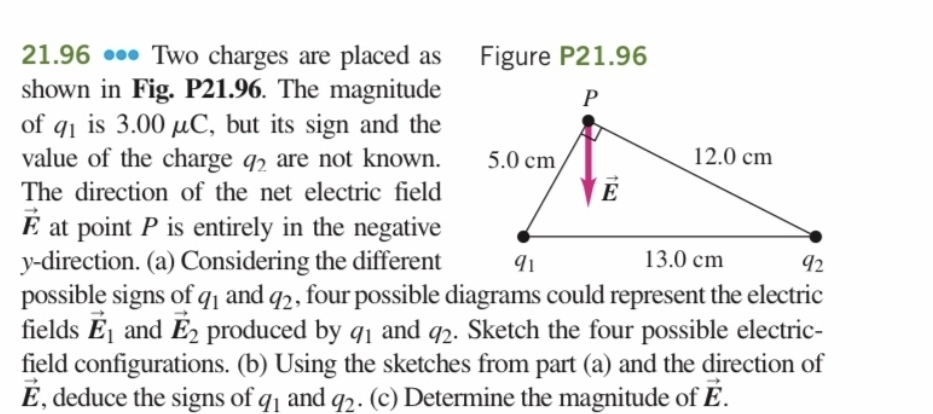21.96 0. Two charges are placed as shown in Fig. P21.96. The magnitude of q1 is 3.00 µC, but its sign and the value of the charge q, are not known. Figure P21.96 P 5.0 cm 12.0 cm The direction of the net electric field E E at point P is entirely in the negative y-direction. (a) Considering the different possible signs of q and q2, four possible diagrams could represent the electric fields Ej and E2 produced by q1 and q2. Sketch the four possible electric- field configurations. (b) Using the sketches from part (a) and the direction of E, deduce the signs of q, and 92. (c) Determine the magnitude of E. 13.0 cm 92
Ampere Circuital Law
Ampere's Law states that "for any closed loop path, the sum of the length elements times the magnetic field in the direction of the length element is equal to the permeability times the electric current enclosed in the loop.”
Current Density
To design the electrical and electronic system, the current density is an important factor. The designer current level is the factor on which the circuit performance depends and with the help of the dimensions of the conducting current the current density is then determined. For instance, despite the lower current demanded by smaller devices as integrated circuits are reduced in size, there is a type of trend in achieving the higher device number in even smaller chip areas. The current density is increased in this region at higher frequencies because the conducting region in a wire becomes confined and this is known as the skin effect. The consequences increase as the current densities become higher.

Step by step
Solved in 6 steps with 6 images









